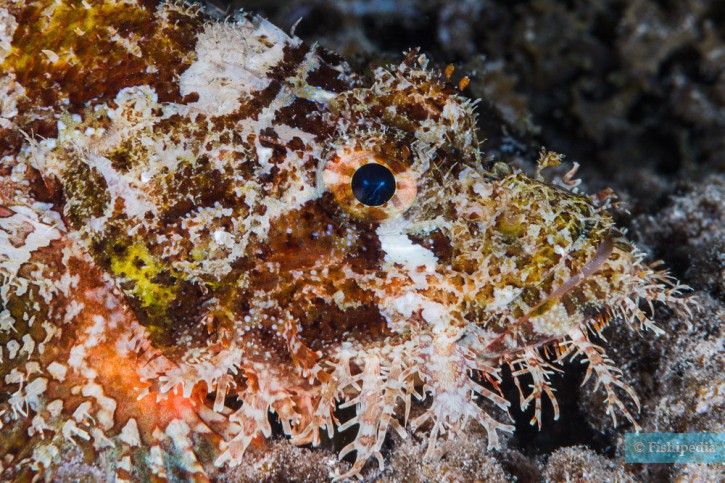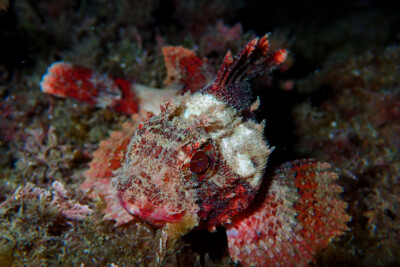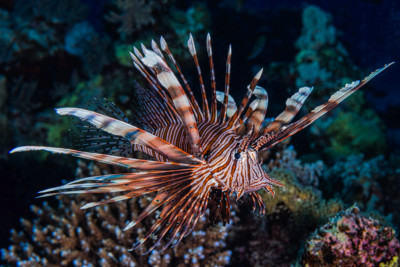papuan scorpionfish
| Scientific name | Scorpaenopsis papuensis |
|---|---|
| Descriptor | Cuvier |
| Year of description | 1829 |
| IUCN category (World) | LC |
| Family | Scorpaenidae |
| Genus | Scorpaenopsis |


Introduction
The Scorpaenopsis papuensis, commonly known as the papuan scorpionfish, is a predator closely related to stonefish. It was initially recorded in the Indonesian seas and the sea of the Philippines but its range seems much broader. It is an expert in camouflage.
Who is it?
Morphology
-
Type
-
Average size20 cm
-
Maximum size25 cm
-
ShapeUnclassifiable
-
Mimicrystone
-
Type
-
Average size20 cm
-
Maximum size25 cm
-
ShapeUnclassifiable
-
Mimicrystone
How to recognize This fish ?
The color of this fish varies depending on the substrate but it commonly appears brown to red with whitish spots. Its mouth is typical of ambush predators, protractile and upwardly inclined.
Like in S. oxycephala, adults have a kind of small "beard" forming filaments similar to small corals. They have a violet spot on the back of the spiny dorsal fin. Juveniles have large tentacles directed forward from the eyes.
Sexual dimorphism
Dimorphism not reported.
Behaviour & Life cycle
-
dietcarnivorous
-
Sociabilitysolitary
-
territorialYes
-
Way of livingnocturnal
This species resides on the bottom. It spends most of its time motionless, either partly buried in the sand or camouflaged in rocks.
This fish is a specialized predator in hunting fish. It uses its elastic mouth to gulp down prey passing by.
Reproduction
-
Reproductionovipare qui pond en eau libre
The papuan scorpionfish is an oviparous fish that spawns in open water.
Risks for humans
-
VenomousYes
This species is venomous and can cause serious injuries when touched.
Origin and distribution
Conservation status of populations (IUCN)
What is its habitat?
Natural environment characteristics
-
Temperature22 - 26 °C
-
Depth1 - 50 m
-
FlowMedium, Slow and Stagnant
Biotope presentation
This fish frequents rocky and coral-rich areas. It is observed at substantial depths (40m). It is also encountered on coasts and slopes, and sometimes in seagrass beds near estuaries.
Species of the same biotope
To go further
Sources & Contributions
Participation & Validation
The Fishipedia team and specialist contributors are committed to providing high-quality content. However, although the information comes from scientific sources or testimonials from specialists, the cards may contain inaccuracies.

Benoit Chartrer
Translation
Translation done with the valuable contribution of our translators, who make this information available to a wider audience. We sincerely thank them for their commitment.
Scientific partners
Tags
Species of the same family
Same genus
Species of the same biotope





























